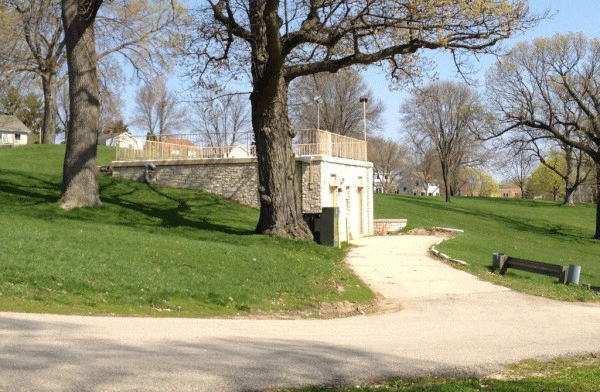In a February 26, 2014 email Madison-Kipp Corporation advised the Madison Water Utility to pump the Olbrich Well (Well 8) full-time, after the Water Utility Board asked for assurance from the Wisconsin DNR that Well 8 will not be impacted by Kipp’s contamination plume.
Apparently the Water Utility is considering using Well 8 full-time again, despite knowing that the well is very likely connected to the upper aquifer, making it highly vulnerable to the significant contamination spreading from Kipp. This information, found in Kipp’s consultant report on DNR website, flies in the face of repeated assurances from the Madison Water Utility and Kipp over the last several years that Well 8 is protected from Kipp’s contamination by the Eau Claire shale layer. See footnote for more information and a link to the report.
In the Feb. 26 email, Kipp’s consultant, at the request of Kipp CEO Tony Koblinski, asserted that “all of the data, information, and best available science indicate that Unit Well 8 will not be impacted by PCE in groundwater at the Madison Kipp site if Well 8 operates 24/7.” In support of this, among other things, Kipp claims that “the vertical extent of PCE has been delineated at the Madison Kipp site,” “is not deeper than 170 feet,” and the “the PCE plume has stabilized and is no longer expanding.”
These claims are completely unsubstantiated by evidence. The vertical and horizontal extents of the Kipp plume have never been fully delineated, as this memo describes, and communications among government officials also state. Since nobody knows how deep and wide the Kipp plume really is—because there hasn’t been enough testing— it is impossible to verify that the plume is “stabilized” and “no longer expanding.”
This raises many questions. One big one: Why would it be to Kipp’s advantage to pump Well 8 full time? We speculate on this and other questions in an upcoming post. Please send your thoughts on this to info “at”mejo.us
*************************
The Well 8 log is in the last 3 pages of this report. On p. 9 of the report, it states:
“The City of Madison drinking water source is groundwater from various sandstone bedrock formations. Municipal Unit Well 8 is the closest municipal well to the Site and is approximately 1,400 feet southeast of the Site (Figure 1). Municipal Unit Well 8 is cased to 280 feet bls, below the Eau Claire shale aquitard, and is an open bedrock well across the Mount Simon Formation from 280 to 774 feet bls (McCarthy, 1945). According to the Unit Well 8 boring log (Appendix C), dynamite shots were used in a nearby test borehole at depths of approximately 380 feet, 430 feet, 480 feet, and 530 feet to fracture the bedrock between the test and Unit Well 8 borehole to increase the specific capacity of Unit Well 8. After the boreholes were connected by fracturing the bedrock, Unit Well 8 was tested at a pumping rate of approximately 1,965 gallons per minute with 65 feet of drawdown, yielding a specific capacity of approximately 30 gallons per minute per foot of drawdown.”
The “test well” they are referring to above is not cased through the Eau Claire shale. This means it is open to the upper aquifer. Because the test well and the production well have been connected (via dynamite shots), essentially the two wells are connected. In sum, this means that Well 8 is very likely connected to the upper aquifer through the test well hole. Government officials at city, county, and state agencies have known about this for some time, but have never shared this information publicly.

